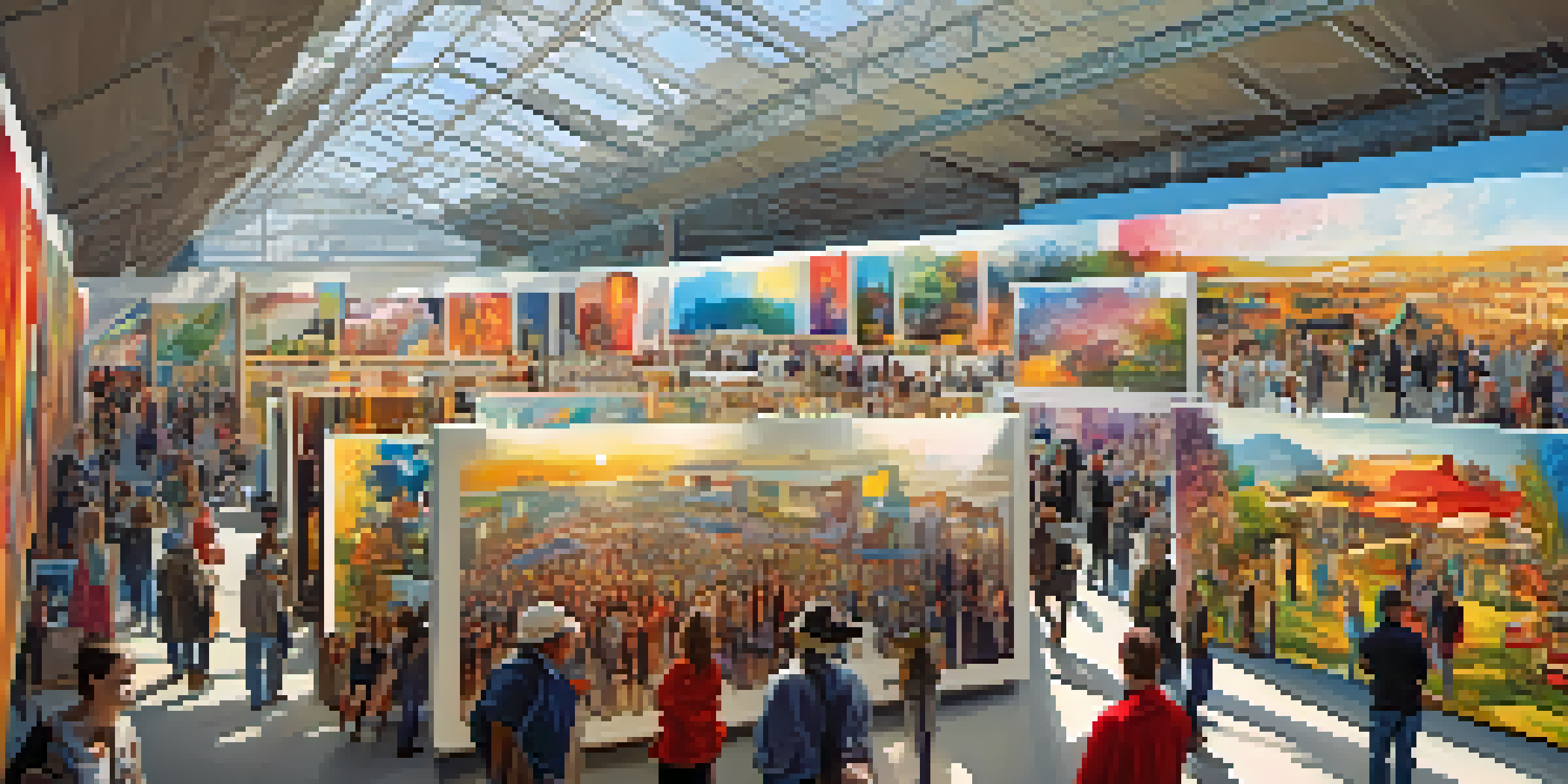Art Fairs: Opportunities and Challenges for Artists

Understanding Art Fairs: A Brief Overview
Art fairs are vibrant marketplaces where artists, galleries, and collectors converge. They provide a unique platform for artists to showcase their work to a broader audience, making them an exciting opportunity for exposure. These events often feature a wide range of art forms, from paintings and sculptures to multimedia installations. By participating in art fairs, artists can not only sell their artwork but also build valuable connections within the art community.
Advantages of Participating in Art Fairs
One of the most significant advantages of art fairs is the visibility they offer. Artists can directly engage with potential buyers, critics, and curators, which can lead to sales and invitations to future exhibitions. Additionally, the immediate feedback from attendees can help artists refine their work and gain insights into market trends. The networking opportunities are invaluable, often leading to collaborations and long-term relationships in the art world.
Visibility and Networking Benefits
Art fairs provide artists with direct engagement opportunities, enhancing visibility and fostering valuable connections within the art community.
Financial Considerations: Costs of Participation
While the potential for sales is high, participating in art fairs can also come with substantial costs. Fees for booth space, travel, and accommodation can quickly add up, making it crucial for artists to budget effectively. Many emerging artists may find these expenses daunting, which can lead to the tough decision of whether to participate or not. It's essential to weigh the potential return on investment against these financial commitments.
The Challenge of Standing Out in a Crowded Space
With numerous artists showcasing their work, standing out at an art fair can be challenging. The competition is fierce, and artists must find creative ways to attract attention. This could involve not only the quality of the artwork but also the presentation and marketing strategies used at the booth. Engaging storytelling about the artist's journey or the inspiration behind the work can captivate potential buyers and set one apart from the crowd.
Financial Considerations for Artists
Participating in art fairs can be costly, requiring artists to carefully budget and weigh potential returns against expenses.
Navigating Trends and Themes in the Art Market
Art fairs often reflect current trends and themes in the art market, which can be both an opportunity and a challenge for artists. Staying informed about these trends can help artists align their work with market demands, increasing their chances of success. However, this can also pressure artists to compromise their personal style in favor of what is popular. Striking a balance between personal expression and marketability is key to navigating this landscape.
Building Relationships with Collectors and Galleries
Art fairs serve as a crucial point for artists to connect with galleries and collectors. Establishing these relationships can lead to future exhibitions and sales opportunities. For artists, demonstrating professionalism and a strong engagement during the fair can leave a lasting impression. It's about more than just selling art; it's about fostering connections that can support an artist’s career in the long run.
Importance of Relationship Building
Establishing relationships with collectors and galleries during art fairs can lead to future opportunities and long-term career growth.
Post-Fair Follow-Up: Keeping the Momentum Going
After the excitement of an art fair, following up with contacts made is essential for maintaining momentum. Artists should reach out to collectors and galleries with personalized messages, expressing gratitude for their interest. This is also an excellent opportunity to share updates about new work or upcoming shows. By nurturing these relationships, artists can keep the conversation going and potentially convert interest into sales.
Conclusion: Balancing Opportunities and Challenges
Art fairs present a unique blend of opportunities and challenges for artists. While the potential for exposure and sales is enticing, it's crucial to navigate the financial and competitive aspects thoughtfully. By focusing on building relationships and staying true to their artistic vision, artists can maximize the benefits of participating in these dynamic events. Ultimately, success at an art fair lies in understanding how to leverage both opportunities and challenges effectively.